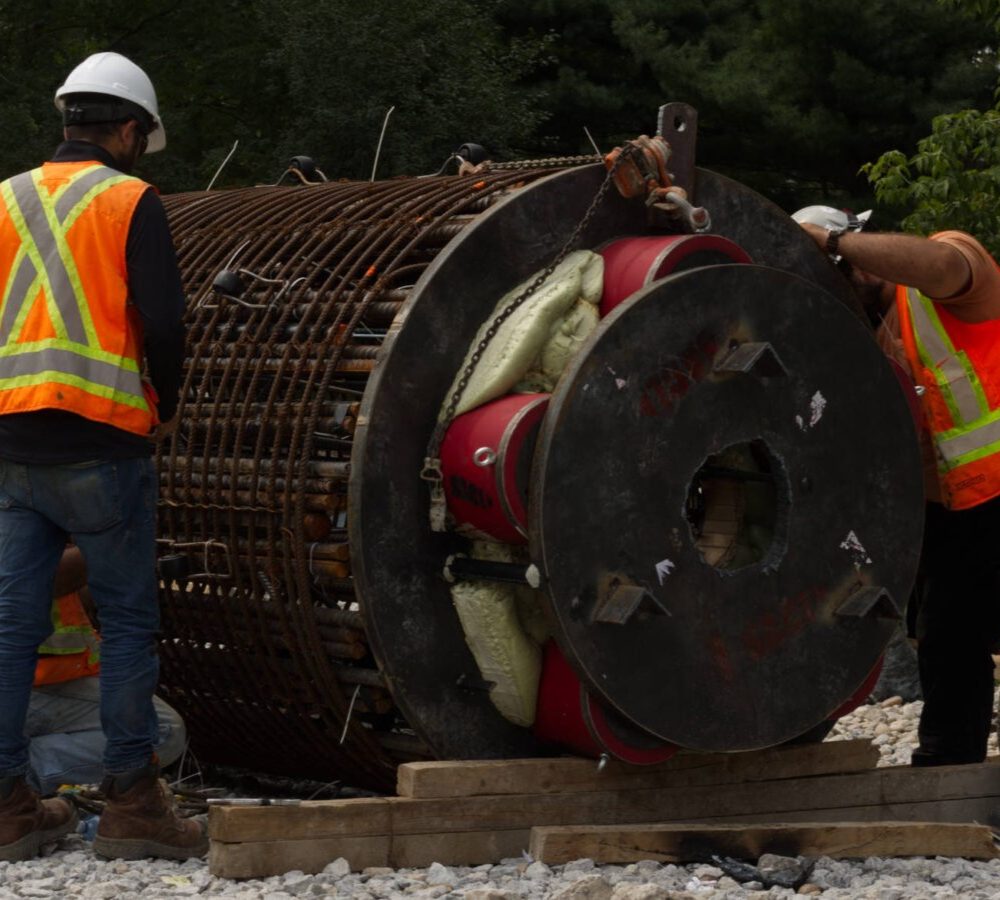Innovative Bidirectional Static Load Testing (BDSLT) for unmatched accuracy and reliability. Our advanced, automated systems revolutionize pile foundation testing with precision and efficiency.




























Bi-Directional Static Load Testing assesses the foundation load capacity by applying load in two directions. This test is Large, deep or complex foundations, high load requirements, uncertain soil conditions.
SACL’s Bi-directional Static Loading Test (BDSLT) is the most innovative static load testing technique in the industry. The accuracy and speed of SACL’s testing method has made BDSLT an invaluable tool. Traditionally, BDSLT has been the most trusted means of testing pile foundations axial capacity instead of conventional head-down tests. SACL engineers have developed automated testing systems and data acquisition software to eliminate human errors and to increase the reliability and accuracy of measurements in load testing.


Bi-Directional Static Load Testing (BDSLT) is used to verify the load-bearing capacity of deep foundation piles for bridges and heavy infrastructure projects. These types of structures usually face significant and variable loads, making it crucial to confirm the foundation’s performance under stress. BDSLT provides real-time data on load distribution, ensuring the foundation can safely support the structure.

Skyscrapers require foundations which can support immense weight, especially when challenging soil conditions are present. BDSLT is used to validate the capacity of deep foundation piles to bear the extreme vertical loads required in skyscraper projects. BDLST helps you optimise your pile design, ensuring structural stability, safety, and overall success of the project.

Marine and offshore structures such as piers, oil platforms, and docks face unique load challenges due to the underwater conditions. BDSLT is used to test the deep foundations of these underwater structures. This is done to ensure their capacity to withstand both vertical and lateral loads in these environments, which provides critical data for long-term durability.

BDLST can be used for a wide range of other projects such as wind turbines, communications towers, industrial facilities and other structures where deep foundations are critical to support vertical and lateral loads. The versatility of the test makes it ideal for optimising foundation design and ensuring structural stability in whichever environment you need to build on.
In traditional static load testing, a single-direction load is applied. As the name suggests, BDSLT uses two loads – upwards and downwards – allowing for more efficient load application and testing. This reduces the need for large reaction systems, making testing faster and more cost-effective.
Yes, bidirectional testing can be performed on bell piles. Bidirectional static load tests (BDSLT) involve installing a load cell within the pile, which applies an upward and downward force simultaneously. This type of testing can accommodate the unique geometry of bell piles, allowing for accurate measurement of their load-bearing capacity and performance under different loading conditions. It is important to note, however, that the pile must have sufficient shaft resistance to counter the end bearing by providing reaction to the bidirectional cell. If this condition is not met, a reaction frame would be needed at the pile head to supplement the shaft resistance.
Yes, bidirectional testing (BDSLT) can replace traditional static load testing (SLT) on many types of piles. BDSLT offers several advantages, including the ability to test the pile’s capacity both in compression and tension using a single test setup. It can provide more detailed information about the pile’s performance and often requires less space and time compared to traditional SLT. However, the applicability may depend on specific project requirements and site conditions. One important condition is the availability of sufficient shaft resistance to provide equal reaction to the cell load in both upward and downward directions.
Bidirectional testing (BDSLT) offers several advantages over traditional static loading tests (SLT):
Dynamic (PDA) or static pile testing (SLT) should be performed ideally before finalizing the foundation design. This is the most effective way to confirm the design parameters and ensuring adequate foundations. Additional testing may be beneficial during the construction phase, after the piles have been installed but before the construction of the superstructure begins. This timing allows for the verification of pile capacity and integrity, ensuring that the foundation will perform as expected under the design loads.




Headquarters
Unit 8,
5330 Canotek Road,
Gloucester,
Ontario K1J 9C3,
Canada.
Phone:
+1-807-700-7225
Email:
info@saclcanada.com
Hours:
Monday to Friday – 09:30 – 17:30 (EST)
Weekends – Closed
© 2024. All rights reserved to Scientific Applied Concepts Ltd. Canada.